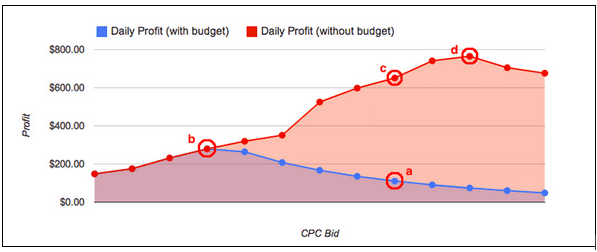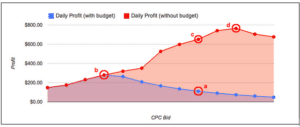I recently passed my Google certification exam for Advanced Search Engine Marketers. It was not easy, but as with all things, you get out of it what you put into it, and I was forced to put in a lot of work just to understand all the concepts that were thrown at me from the exam material.
A very important one that was covered is one that all business owners want to talk about: Cost Per Acquisition. It’s the first thing and the last thing an owner will mention in a meeting with an advertiser. In fact there’s a funny quote from John Wanamaker, the founder of what became Macy’s department store, that depicts how investors feel about advertising, “Half the money I spend on advertising is wasted; the trouble is I don’t know which half.”
We now have the ability to show business owners where their money is going, but how do you justify that cost? In Google AdWords there is a daily budget that advertisers set for their clients, and then there are bids for each keyword that eat that budget as ads get clicked on. As I was studying the exam material there was a graph explaining how to best maximize your profits from Google AdWords, and when I first saw it I was thinking, “Great! I love graphs. They are easy to understand, and all I have to do is look at it and I can get the picture.”
Then I looked at the picture. Yeah, I wasn’t so sure what I was looking at, so I still had to read the material. I am glad I did though, because it turns out that what this graph is depicting is two different bidding strategies: from a to b; and from a to c to d.
The high-level of it is that if after your first couple weeks of running your campaign you optimize your keyword bids (a to b), it may increase profit, but you will not get the most profit possible from your campaign. By contrast, if you optimize daily budget first (from a to c) then optimize your keyword bids (c to d), you will.
That’s because increasing your bids when you’re limited by budget will increase your cost per customer conversion, but bring you less conversions at the same time. And decreasing your bid on certain keywords will increase your profit, but you’re still held back by budget so you’re only bringing in a fraction of the customers you could with a higher budget. By contrast, increasing your budget first, then optimizing your bid on keywords will still result in higher cost per conversion, but will also result in more conversions.
But what is an optimal budget? Well, it’s impossible to know exactly what that number is before you begin. So start out with a figure that’s comfortable for you, but just keep in mind that after your first two weeks, when you look at your figures, rather than only going at your keywords and optimizing them and their bids, look at your daily budget to see if there’s any room for growth first.
So the phrase of the day is optimize your budget first, then your bids.

Allan Todd is CEO of Pagecafe Digital Marketing. In 2022, Allan teamed up with Infront Webworks to provide digital marketing, website design, content marketing, SEO and strategy and solutions to local businesses. Allan lives in Colorado Springs.


